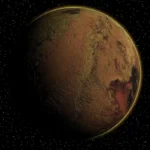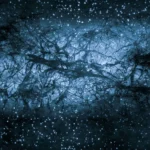
A nebula is a large cloud of dust, gas, plasma, and hydrogen. Nebulae are also known as nurseries because they are where stars are created or born. Nebula is the Latin word for cloud, and distant galaxies were also referred to as nebulae until the 1920s. The first true nebula was mentioned in the 964 book Book of Fixed Stars written by Persian astronomer Abd al-Rahman al-Sufi. Nicolas-Claude Fabri de Peiresc discovered the Orion Nebula in 1610. There are numerous ways for nebulae to form. Some are formed as a result of supernova explosions or from gas already present in the interstellar medium, whereas others are formed by stars.
Interesting facts about Nebula:
When ionized gases emit a variety of colors, most often as a result of a nearby hot star, an emission nebula forms. The Omega Nebula is an example of an emission nebula.
A dark nebula is so dense that it obscures objects behind it. Light is extinguished by interstellar dust grains in this type of nebula. The Horsehead Nebula is an example of a dark nebula.
A planetary nebula is an emission nebula composed of glowing and expanding ionized gases. The Cat’s Eye Nebula is an example of a planetary nebula.
A protoplanetary nebula is a type of reflection nebula that exists between the asymptotic giant branch phase and the planetary nebula phase of the evolution of a star. The Red Rectangle Nebula is an example of a protoplanetary nebula.
A diffuse nebula is one with no clearly defined boundaries. The Carina Nebula is an example of a diffuse nebula.
A reflection nebula appears blue because it cannot emit its own light and instead reflects the color of nearby stars. A reflection nebula indicates the presence of an emission nebula nearby.
Ant Nebula, Eagle Nebula, Hourglass Nebula, Barnard’s Loop, Boomerang Nebula, Crab Nebula, Eskimo Nebula, Fox Fur Nebula, Lagoon Nebula, Pelican Nebula, Orion Nebula, and Tarantula Nebula are some well-known nebulae.
Existing nebula catalogues include the Gum Catalogue, RCW Catalogue, Sharpless Catalogue, and Caldwell Catalogue.
Nebulae are typically very large, with a diameter of millions of light years.
A light year is the distance that light can travel in a single year.
Some nebulae are named after their shapes, such as the Horsehead Nebula, which appears to be a horse’s head from Earth.
The Hourglass Nebula, which resembles an hourglass, is about 8,000 light-years away from Earth.
Scientists believe that new stars are formed in nebulae. The idea is that the nebula’s gas and dust begin to squash together and contract, becoming hotter and denser. When this cloud becomes hot and dense enough, the hydrogen contained within it ignites, resulting in the formation of a new star.
The sun is expected to become a nebula in approximately five billion years.
Extra-galactic nebulae are any nebulae that are found beyond the Milky Way.










Your blog is like a secret garden, full of hidden wonders and unexpected delights. I’m constantly amazed by your creativity and insight, and I can’t wait to see what other treasures you have in store for us.